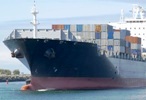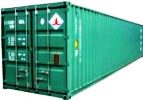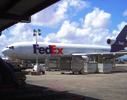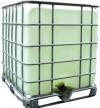| Mubychem Group, established in 1976, is the pioneer manufacturer of Carbon Activated or Activated Charcoal or Activated Carbon, Pharmaceutical, Fragrance & Flavor chemicals in India. Mubychem Group has several manufacturing facilities spread across Gujarat and Mumbai India and world wide contacts and toll manufacturers. We are exporting globally to countries like USA, Canada, Europe, UAE, South Africa, Tanzania, Kenya, Egypt, Nigeria, Uganda, Turkey, Mexico, Brazil, Chile, Argentina, Dubai etc. |
The participating units have one or more accreditations like FDA - GMP approval; ISO-9001 Certified; "REACH"registered; ISO-22000; Kosher Certified;Halal Certified; HACCP. We offer Pure & IP BP USP FCC Food Grade ACS AR Analytical Reagent Grades of Chemicals | |







Activated Carbon Activated Charcoal Manufacturers, MSDS Sheet
Activated Charcoal BP, Activated Carbon USP IP FCC
Activated Charcoal MSDS Sheet; Material Safety Data Sheet
SECTION 1 Chemical Product and Company Information
Synonyms: Activated carbon; Charcoal, activated, powder; carbon black; Carboraffin; Carborafine
CAS No.: 7440-44-0
Molecular Weight: 12.01
Chemical Formula: C
SECTION 2 Composition / Information on Ingredients
Components: Activated Charcoal; Activated Carbon
CAS#:
7440-440
% by weight: 90-98
Hazardous: Yes
SECTION 3 Hazards Indications
CAUTION! ACTIVATED CARBON AFFECTS THE RESPIRATORY AND CARDIOVASCULAR SYSTEMS.
The primary concerns for occupational exposure to Activated Charcoal; Activated Carbon are skin contact and inhalation in the form of dust. The dust may cause eye irritation, slight skin irritation, and possible respiratory tract irritation that can cause coughing or sneezing.
SECTION 4 First Aid Measures
EYES: Immediately flush with large amount of water.
SKIN: Immediately flush affected area with water. Wash clothing.
INHALATION: Remove to fresh air.
INGESTION: Induce vomiting as directed by medical personnel.
SECTION 5 Fire Fighting Measures
Flash Point : N/A
Ignition Temperature: Not known
Fire and Explosion Hazards: When burned, hazardous products of combustion including oxides of carbon can occur. Irritating and/or toxic gases due to decomposition of the product may be generated during a fire. Contact with strong oxidizers such as ozone or liquid oxygen may cause rapid combustion.
Extinguishing Media: Dry chemical, water fog, foam or carbon dioxide.
Fire Fighting Procedures: Wear full protective clothing and NIOSH approved self-contained breathing apparatus.
SECTION 6 Accidental Release Measures
Leak or Spill: When leaks or spills of Activated Charcoal; Activated Carbon occur, clean up in a fashion that does not dissipate dust into air. Manage in accordance with good industrial hygiene and safety practices such as avoiding unnecessary exposure and removal of material from skin, clothing and eyes.
SECTION 7 Handling and Storage
Keep Activated Charcoal; Activated Carbon in a tightly closed container, stored in a cool, dry, ventilated area. Protect against physical damage. Keep away from moisture and oxidizers. Avoid dust dispersal.
Wet Activated Charcoal; Activated Carbon depletes oxygen from the air and therefore dangerously low levels of oxygen may be encountered in confined spaces. Work procedures for potentially low oxygen areas should be followed.
Containers of this Activated Charcoal; Activated Carbon may be hazardous when empty since they retain product residues (dust, solids); observe all warnings and precautions listed for the product.
SECTION 8 Exposure Controls / Personal Protection
Respiratory protection: Where airborne exposure is probable, use NIOSH approved respiratory protection equipment suitable to the material.
Skin Protection: Avoid skin contact. Wear appropriate dust resistant clothing. Wash clothes and related equipment before reuse. Completely wash skin after handling. Wear gloves and long sleeve shirts to prevent long term exposure.
Eye Protection: Safety glasses with side panels are required for any form of handling. Provide an eye flushing station nearby.
Airborne Exposure Guidelines: OSHA and ACGIH have not established exposure limits for this material. However, OSHA and ACGIH have established limits for nuisance dusts which are 15 mg/m total dust and 5mg/ m respirable dust. The ACGIH TLV/TWA for nuisance dusts called particulates not otherwise classified (PNOC) is 10 mg/m inhalable particulate and 3 mg/m respirable particulate.
SECTION 9 Physical and Chemical Properties (Typical)
Appearance: Activated Charcoal; Activated Carbon is fine black powder.
Odor: Odorless.
Solubility: Insoluble in water.
Specific Gravity: 1.8 - 2.1
pH: 5.0-10.0
% Volatiles by volume @ 21C (70F): 0
Boiling Point: Sublimes.
Melting Point: 3550C (6422F)
Vapor Density (Air=1): 0.4
Vapor Pressure (mm Hg): 1 @ 3586C (6487F)
SECTION 10 Stability and Reactivity
Hazardous Decomposition: Oxides of carbon (CO & C02).
Hazardous Polymerization: Does not occur.
Stability: Activated carbon is determined stable under the outlined conditions of storage, shipment and use.
Incompatibility: Rapid combustion is possible when in contact with strong oxidizers such as ozone, liquid oxygen, chlorine, etc.
SECTION 11 Toxicological Information
Eyes: Not an eye irritant other than dust
Skin: Not a primary skin irritant, sensitizing or corrosive agent
Inhalation: Not established
Ingestion: Oral LD50 >5g/kg (rats)
Sub chronic Effects: Not established
Teratology (Birth defects): Not established
Mutagenicity (Genetic effects): Not established
SECTION 12 Ecological Information
Ecotoxicological information: Because Activated Charcoal; Activated Carbon is a relatively inert substance and is insoluble in water, it is not expected to pose significant ecological hazards. The environmental persistence of this material would be primarily based on its physical form, that is, fine particles of this material could be dispersed In the environment by wind and water, while large particles would persist with little dispersion.
Chemical Fate information: No data is available
SECTION 13 Disposal Considerations
Recover, reclaim or recycle when practical. Activated Charcoal; Activated Carbon alone is not classified as a hazardous waste (activated carbon used to adsorb hazardous substances may become hazardous due to the chemicals it has adsorbed). Dispose of Activated Charcoal; Activated Carbon in accordance with federal, state and local regulations.
SECTION 14 Transport Information
DOT Name: Not regulated by DOT
DOT Hazard Class / Packing Group: NA
UN Number: NA
Note: Activated Charcoal; Activated Carbon pass the test for self-heating substances as reflected in the United Nations Recommendations on the Transport of dangerous Goods, manual of Tests and Criteria (see 33.3.1.3.3) and is not considered spontaneously combustible. Therefore, the provisions for shipping activated carbon, class 4.2, in the IATA, ICAO, and IMDG Code publications do not apply to shipments of this material.
SECTION 15 Regulatory Information
Sara Hazard Classification:
Immediate (Acute) Health: Yes
Delayed (Chronic) Health: No
Sudden release of Pressure: No
Reactive: No
Fire: No
OSHA: Hazardous by definition of Hazard Communication Standard (29 CFR 1910.1200).
WHMIS (Canada): CLASS D-2B: Material causing other toxic effects (TOXIC). Aluminum Sulfate anhydrous (CAS no. 10043-01-3) is on the
Canadian DSL. Aluminum Sulfate hydrate (Cas no. 17927-65-0) is not on the Canadian DSL.
DSCL (EEC): R36/37/38- Irritating to eyes, respiratory system and skin. S24/25- Avoid contact with skin and eyes. S36/37/39- Wear suitable
protective clothing, gloves and eye/face protection.
HMIS (U.S.A.):
Health Hazard: 2
Fire Hazard: 0
Reactivity: 0
Personal Protection: E
National Fire Protection Association (U.S.A.):
Health: 2
Flammability: 0
Reactivity: 0
Specific hazard:
Protective Equipment:
Gloves. Lab coat. Dust respirator. Be sure to use an approved/certified respirator or equivalent. Wear appropriate respirator when ventilation is inadequate. Splash goggles.
SECTION 16 Other Information
Disclaimer:
**********************************
Our company provides this Activated Carbon or Activated Charcoal MSDS information sheet contained herein in good faith but makes no representation as to its comprehensiveness or accuracy. This Activated Carbon or Activated Charcoal MSDS sheet is intended only as a guide to the appropriate precautionary handling of the material by a properly trained person using this product. Individuals receiving the information must exercise their independent judgment in determining its appropriateness for a particular purpose.
**********************************
Activated Charcoal Activated Carbon Manufacturers:
MUBYCHEM GROUP
CHINCHBUNDER, MUMBAI 400009, INDIA
TEL: (OFFICE) 91-22-23774610, 91-22- 23723564. 91-22-23728264
e-mail: anmol@pcmenergy.com

Copyright and Usual Disclaimer is Applicable.
If I give you “My Word” Nobody can undo it.
If I sign an “Agreement” my Lawyer will undo it
Perfection is made up of small thing but it is not small.

